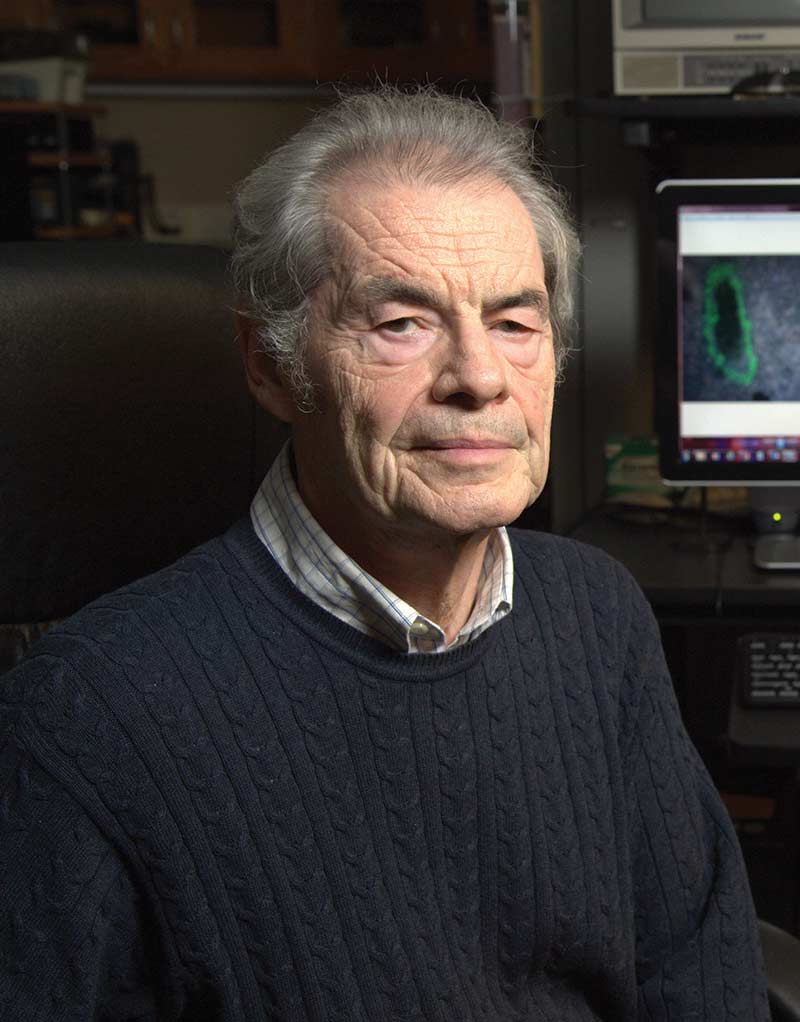When the COVID-19 pandemic struck in the spring, Auburn researchers adapted to the rapidly changing research environment, utilizing best practices in safety procedures to carry on with essential research programs.
Auburn researchers approach possible coronavirus vaccines from multiple angles
Article body
Auburn College of Veterinary Medicine assistant professor Dr. Constantinos Kyriakis began work in the spring to test new vaccine candidates that could offer protection against COVID-19 and help prevent the spread of the novel coronavirus.
Working with Dr. Ted Ross, director of the Center for Vaccines and Immunology at the University of Georgia, Kyriakis conducted animal trials to investigate the immunogenicity of different vaccine doses and adjuvant combinations against SARS-CoV-2, the virus which causes COVID-19. Ross’ research team is designing and generating multiple vaccine candidates as part of global efforts to combat SARS-CoV-2 that has infected more than 30 million people worldwide.
Kyriakis and a team of Auburn veterinary medicine researchers are testing the vaccine candidate’s ability to trigger an immune response in swine, when used alone or in combination with other ingredients. These additional ingredients, called adjuvants, are often used in vaccines to help the body create a greater immune response. Identifying the correct combination is vital to the effectiveness of any vaccine.
CytoViva Inc., a subsidiary company of the Auburn Research Park-based firm Aetos Technologies Inc. — and the registered name for patented microscope technology developed by Dr. Vitaly Vodyanoy of Auburn’s College of Veterinary Medicine — partnered with Dr. Joanna Sztuba-Solinska, an assistant professor of biological sciences in the College of Sciences and Mathematics, to aid in her research efforts.
A molecular virologist, Sztuba-Solinska has focused her research on the herpesviruses, but with the current COVID-19 pandemic, she has begun to expand her research focus to studying SARS CoV-2, the virus that causes the COVID-19 disease.
“This is a dramatically different type of virus,” she said. “I study Kaposi’s sarcoma-associated herpesvirus, which is a DNA virus that as most herpesviruses, coevolved with the human population for a very long time, thus, it is much less virulent.
“SARS CoV-2 is a newly emerged virus with probably the largest RNA genome, and the unique capacity of proofreading its mistakes —which you usually don’t see with RNA viruses. However, because it’s an RNA virus it has more so to speak evolutionary flexibility, meaning, it can undergo mutations, and go from animal reservoir to, unfortunately, human reservoir. Also, because it is a newly emerged virus, it has a much greater virulence, that is, the capacity to cause the disease or even death.”
While Sztuba-Solinska says she is optimistic that efforts underway to produce an effective COVID-19 vaccine will be successful, the process takes many months to develop, test and confirm the effectiveness and human safety of a new vaccine.
Meanwhile, her immediate research in the area of coronaviruses and COVID-19 is focused on working collaboratively with researchers in the Samuel Ginn College of Engineering on polymers to be used in antimicrobial materials for protective face masks, and in determining if the differences in types of coronaviruses can be detected visually by observing changes in their spectra.
Researchers from the Auburn University College of Veterinary Medicine are partnering with Humane Genomics Inc. to develop a potential vaccine for the COVID-19 virus currently at the heart of the ongoing global pandemic.
According to Dr. Bruce Smith, director of the Auburn University Research Initiative in Cancer, professor in the Department of Pathobiology and scientist in the college’s Scott-Ritchey Research Center, the collaboration between Auburn and Humane Genomics is an outgrowth of cooperation between the two in the field of cancer research. Much of the science used in this particular vaccine development is adapted from the company’s cutting-edge research into precision virus-based cancer therapies.
“We had previously worked with Humane Genomics in the area of cancer treatment,” Smith said, “specifically an attempt to custom synthesize viruses to target tumors. The same basic concept can also be used to develop a vaccine. All that is necessary is to have the virus’ genome — a genetic map of its DNA — to create a vaccine to target it.”
The COVID-19 genome is available, so the custom development of a vaccine tailored to its specific vulnerabilities, a so-called “synthetic vectored vaccine,” was a relatively rapid process. In this case, that process involved genetically synthesizing via computer modeling a harmless virus called vesicular stomatitis virus, or VSV, and giving it the same “spike” protein characteristic of COVID-19. This spike protein binds with so-called ACE2 receptors on human lung cells to allow the harmful virus to infect them. But if the vaccine functions as hoped, the immune system would be triggered to produce antibodies to recognize this spike protein and block infection, but in a harmless virus. That same triggered immune reaction — in theory — would then protect against COVID-19.
“The idea of developing vectored vaccines by ‘cutting and pasting’ virus DNA to alter its characteristics is a proven method of vaccine development and has been in use for more than a decade,” Smith said. “In the case of animals, vectored vaccines have been successfully developed for rabies and fowl pox. In human medicine, a vaccine approved in 2019 for the deadly Ebola virus was developed using the same technique.
“What makes the Humane Genomics approach unusual,” added Smith, “is that they are skipping the traditional cutting and pasting process of removing and substituting DNA and instead synthesizing their targeted viruses using computer modeling. It allows for a much quicker process. If they have the target’s genome, they can develop a vaccine in about a week.”
It is the testing phase that takes time, and currently the company’s COVID-19 vaccine is in the safety testing phase, which is where Auburn’s contribution comes in. The Auburn College of Veterinary Medicine is testing the vaccine on rats to see if they develop the proper antibodies or become ill due to unforeseen side effects. Later, another vaccine partner will perform similar tests with guinea pigs, and if all goes well, the vaccine can then move on to human testing.
Smith says that, while he is cautiously optimistic a working vaccine will eventually be developed, there is still a long road ahead despite the urgent need.
“With a tremendous amount of luck, we could have a vaccine by the end of the year,” he said, “but more likely, we won’t know for sure if a vaccine is going to be successful until sometime in 2021.”





